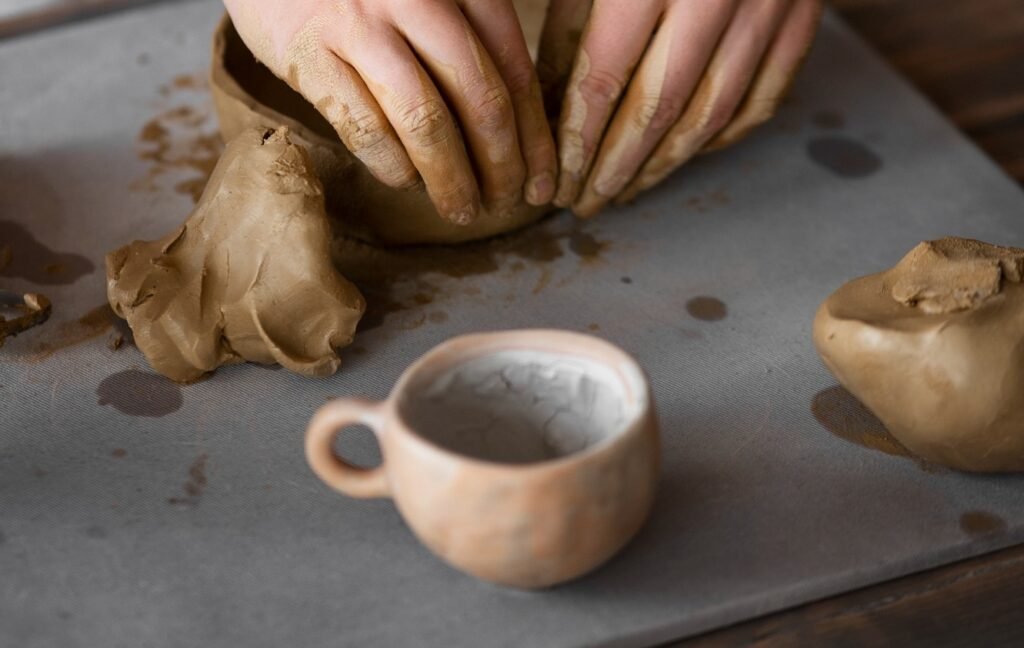Sodiceram marks the beginning of a novel age of ceramics where technology and tradition come together to bring decorative items that generate revenue. This article will analyse via a range of sources and on comparative grounds what Sodiceram is, what its manufacturing advantages are, what its contemporary design role is, and what its expanding applications are. We will also address frequently asked questions around Sodiceram to assist you in making well-informed choices for home, project or business.
What is Sodiceram?
Sodiceram is a well-known variety of ceramic, made from an advanced mixture of sodium plus other specialised materials. It boasts considerable performance and aesthetic improvements over standard ceramics. With a footprint combining art and science, the Sodiceram ceramics offer a robust and light product that respects the environment.
The Evolution: From Art to Tech
Ceramics have a long history of thousands of years. The craft of ceramics faces rising demand for sustainability, novelty and digital customisation. Sodiceram meets all those requirements with modern and sleek finishes and robust properties that enhance today’s lifestyles without compromising art.
How Sodiceram is Made: Innovations in Manufacturing
Sodiceram’s manufacturing process combines ancient craftsmanship with precise scientific controls:
- Sodiceram uses premium natural clays that include feldspar, sodium and quartz additives.
- Intense heat fused materials on the atomic level, making it compact and more stable than before.
- 3D modelling & digital printing allow for realistic patterning and almost any texture design on your product.
- Water Jet Cutting which permits complex edges and artistic shapes.
- Formulas that resist thermal shock result in pieces that withstand rapid temperature changes, great for kitchens, exteriors and industry.
What sodium-based compounds do: Incorporating sodium changes the crystal structure for increased mechanical strength, better thermal resistance, and superior chemical durability. This allows Sodiceram to outperform both traditional ceramics and many high-tech alternatives on several fronts.
Key Benefits and Features
Exceptional Durability
Sodiceram is engineered to resist chipping, cracking, scratching, and wear—even in high-traffic or industrial environments. This durability outlasts many traditional ceramic options, making it a solid investment for homes and commercial spaces.
Lightweight and Easy to Install
Thanks to its advanced composition, Sodiceram is lighter than standard ceramics, simplifying transportation, handling, and installation, especially for large panels or tiles.
Design Versatility
Digital customisation opens endless aesthetic options, from realistic stone and wood textures to bold geometric and 3D relief designs. Both artists and architects value this for unique installations or cohesive interior schemes.
Eco-Friendliness
Sodiceram appeals to the eco-conscious, as it often utilises:
- Low-impact raw material sourcing
- Recyclable or compostable packaging
- Energy-efficient and low-waste manufacturing
- No VOC emissions
This makes it a prime choice for projects seeking green certifications or reduced environmental footprints.
Hygienic and Low Maintenance
The non-porous, sometimes antimicrobial surfaces make Sodiceram ideal for kitchens, hospitals, and bathrooms. Maintenance is simple, usually just a wipe with mild soap or water keeps it spotless.
Applications: From Homes to High-Performance Industries
Home and Interior Design
- Statement Walls & Tiles: Artistic statement pieces or minimalist finishes.
- Flooring & Surfaces: Robust against daily wear, spills, and stains.
- Furniture & Installations: Used in contemporary furniture and integrated decor.
Commercial, Medical, and Industrial Spaces
- Healthcare: Non-porous, easy-clean surfaces ideal for medical environments.
- Aerospace & Automotive: Lightweight, thermally stable parts boost efficiency and durability.
- Hospitality: Professional-grade kitchen counters, lobby walls, and more handling high traffic with style.
- Art Installations: Artists exploit their moldability and rich colour retention.
Comparing Sodiceram and Traditional Ceramics
| Feature | Sodiceram | Traditional Ceramics |
| Aesthetics | Customizable, modern, varied | Standard patterns/forms |
| Durability | Exceptional, chip/crack resistant | More prone to wear/damage |
| Weight | Lightweight | Heavier |
| Sustainability | Often eco-certified | Usually less eco-efficient |
| Application | Art, tech, architecture, industry | Primarily art/construction |
| Price-Performance | Affordable luxury | Basic affordability |
Sodiceram in Contemporary Design and Architecture
Architects and designers like Sodiceram because it is customizable and functional. We keep working with some of the best architects and designers on the planet to go beyond limits and add new surfaces, shapes and dynamic digital experiences. Customers can visualise designs in their surroundings for enhanced personalisation with augmented reality tools and AI configurators.
Case Studies & Real-World Projects
- Luxury Homes (Dubai): Matte black sodiceram tiles create dramatic contrasts in high-end interiors.
- Berlin Cafés: Blend earthy sodiceram panels with wood for a warm, modern vibe.
- Eco-Resorts (Bali): Exterior sodiceram withstands humidity and wear, fitting eco-luxe design ideals.
The Path Forward: Smart and Sustainable Ceramics
Looking ahead, Sodiceram is at the forefront of several exciting trends:
- Bright Ceramics materials that change colour, function, or conductivity in response to heat, light, or touch.
- Carbon-neutral manufacturing initiatives
- Virtual showrooms and digital design collaborations
- Expanded global availability
FAQs About Sodiceram
What makes Sodiceram better than ordinary ceramics?
Sodiceram uses special sodium-based compounds and advanced manufacturing for extra toughness, lightness, chemical and heat resistance, plus a broader design palette.
Is Sodiceram truly environmentally friendly?
Yes. Many brands prioritise sustainable sourcing, eco-efficient production, and recyclable packaging, with no toxic emissions.
Where can Sodiceram products be used?
Virtually anywhere, from homes and offices to luxury hotels, hospitals, industrial facilities, and even automotive engineering.
How long does Sodiceram last?
With proper care, sodiceram’s high durability ensures decades of beauty and function, even in demanding spaces.
Is it easy to clean and maintain?
Its dense, non-porous surfaces prevent stains and bacterial growth. Usually, mild soap and water are sufficient.
Can I customise my Sodiceram products?
Absolutely. Many providers offer custom shapes, colours, textures, and even digital design previews using AR and online tools.
Are there innovative uses of Sodiceram I should know about?
Yes! Artists, architects, and engineers use it for everything from sculptural tiles and statement art pieces to advanced technical parts in medicine and aerospace.










